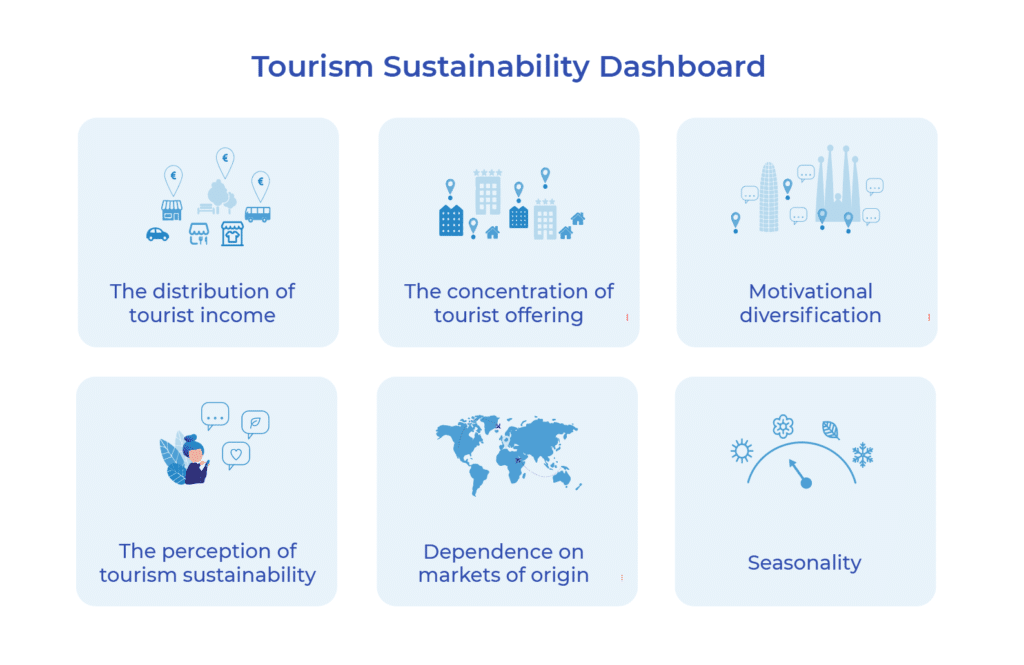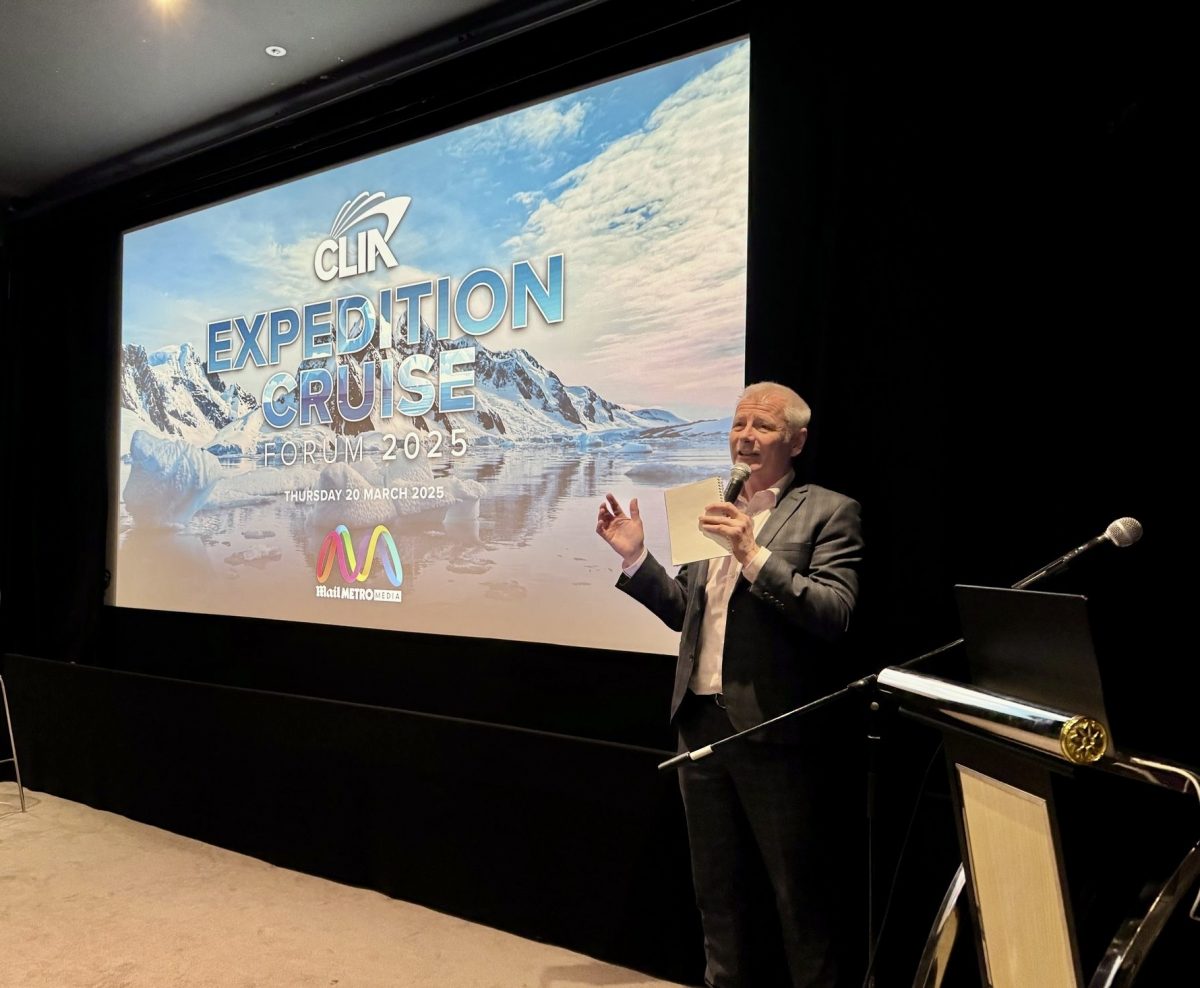Sustainability, the key to reactivating tourism – Mabrian Technologies

What are the six indices that Mabrian’s Sustainability Dashboard measures?
Why sustainability will be the key to reactivating tourism (and how we measure it) : the six factors that you need to know about the sustainability of a destination.
At such a crucial moment for tourism, where the sector has had to abruptly reset itself, it is time to think about how we want to recover and how we want to redesign the industry.
At Mabrian we believe without a doubt that information and data are essential to rebuild tourism from a solid foundation and position the industry as a sustainable economic model.
That is why we have created a tourism sustainability dashboard that measures the different parameters of sustainability in a destination to rebuild a better, more sustainable, more respectful and more responsible tourism sector. Not only with regard to the environment, but also with the local population and economy of each destination.
This dashboard, which Mabrian makes available to our clients and partners, measures the sustainability status of a specific destination and compares it with other destinations. Through the measurement and analysis of six sustainability indices, it offers a corroborated and stable criterion that measures and monitors various structural, economic and social aspects that arise from the tourism sustainability of a destination.
1. The distribution of tourist income:
One of the basic aspects for tourism sustainability in a destination is that the economy and the local community see their quality of life improved thanks to tourism. It is essential that tourist spending generated by visitors reaches all levels of local society and has repercussions on their well-being.
This index measures the level of spending that tourists make in a specific place and the distribution of this income among the different types of establishments there are, with special attention to businesses with an impact on the local economy. This makes it possible to measure the economic impact that tourism has on businesses and the local economies of a specific destination.
2. The concentration of tourist offering:
The saturation or high concentration of the tourist offering in a small part of a territory supposes an imbalance. It contributes to differences in the development of one place with respect to another in the same territory and to economic polarization. That is why a destination with a homogeneous distribution of its tourist offering avoids this type of situation and contributes to a more equitable distribution of pressure and development.
This index measures tourist pressure according to the concentration of hotel and non-hotel accommodation infrastructure, and the concentration of activity in each location. It also calculates the density of the accommodation offering and the tourist influx in the area. The greater the dispersion, the lower the concentration of human pressure in the territory.
3. The perception of tourism sustainability:
What do visitors think about sustainability in the destination? Their perception of the sustainability actions and policies of a place is a key aspect for the image of the destination, for its profitability and also for the stability of the destination in the future, compared to other tourist destinations.
This index is obtained through the analysis of the mentions shared on social networks and measures the perception of visitors regarding aspects related to sustainability. To measure this perception, Artificial Intelligence processes based on Natural Language Processing (NLP) techniques are used to identify concepts and the sentiment linked to them, in large volumes of texts.
4. Motivational diversification:
A destination that is not dependent on specific demand niches (such as sun and the beach) is a destination with a more sustainable, long-lasting and balanced tourism model. When tourism activity is concentrated around a few specific niches, an imbalance and inequality are created in the development of the tourism sector and in the local economy.
This index measures the dependence of tourist activity in a destination with respect to niches and specific segments of demand. The motivations and interests that visitors have when traveling to the destination are analyzed, expressed in online comments, preferences about accommodation and average stay. The more homogeneous the distribution of interests and profiles of visitors to the destination, the better the index score.
5. Dependence on markets of origin:
A destination that has little reliance on specific source markets, especially geographically distant markets, reflects a more sustainable tourism sector. When a destination depends on specific markets, specifically distant ones, it creates dependence on tour operators and intermediaries. This reduces the decision-making capacity and independence of destination managers and tourism companies. In addition, the CO2 per visitor cost from far away destinations is much higher. Such factors can make a destination less sustainable.
This index measures the dependence of tourism in a destination with respect to specific markets of origin, analyzing indicators of air and accommodation demand, as well as the geographical distance between the issuing market and the tourist destination.
6. Seasonality:
Less seasonal destinations offer a more positive impact on local economies through greater employment stability. Likewise, peaks of excessive human pressure are avoided, which cause a high impact on the lives of residents and cause saturation, penalizing visitor satisfaction.
This index measures the dependence of tourist activity in the destination with respect to specific periods of time or seasons of the year. To do this, air traffic, hotel demand and in-destination spend are cross-analyzed.
Based on the analysis of these six indicators of sustainability in a destination we gain the bigger Global Tourism Sustainability Index. This indicator results from the joint assessment of the aforementioned indices, weighted according to their importance, in addition to the other general indicators of the destination, such as the global tourist perception index, the security perception index, the climate perception index, the hotel satisfaction index and the satisfaction index for tourist products. This global indicator also allows general monitoring of the evolution of the destination, as well as comparison with other destinations.
In addition, the dashboard allows the destination to incorporate its own sources available to complement the monitoring of sustainability indicators and have an even broader vision. A clear example can be indicators that measure environmental performance in the destination, since these are not measured in a homogeneous way in all destinations and therefore a destination’s own sources are necessary in each case.
With Mabrian’s sustainability dashboard, destinations can finally make better decisions to create adequate plans and strategies for the sustainable transformation of their destination and measure the results of their actions.
In the definition of these indicators we have had the advice and collaboration of Ético, a consultant specializing in tourism sustainability, that has contributed its experience in the definition of sustainable destinations and the sustainable development objectives of the United Nations.
Learn more about Mabrian Technologies
Our emails to you has bounced travelmole.com Or You can change your email from your profile Setting Section
Your region selection will be saved in your cookie for future visits. Please enable your cookie for TravelMole.com so this dialog box will not come up again.
Price Based Country test mode enabled for testing United States (US). You should do tests on private browsing mode. Browse in private with Firefox, Chrome and Safari
You can see how this popup was set up in our step-by-step guide: https://wppopupmaker.com/guides/auto-opening-announcement-popups/
Subscribe/Login to Travel Mole Newsletter
Travel Mole Newsletter is a subscriber only travel trade news publication. If you are receiving this message, simply enter your email address to sign in or register if you are not. In order to display the B2B travel content that meets your business needs, we need to know who are and what are your business needs. ITR is free to our subscribers.
 United Kingdom
United Kingdom United States
United States Asia Pacific
Asia Pacific

























EU entry-exit system delayed again
Carnival Cruise Line hosts Prague getaway for Fun Ambassadors
Council moves to designate Forest of Dean a Biosphere
US tourism hit with UK, Germany travel warnings
Uganda Airlines launching London flights